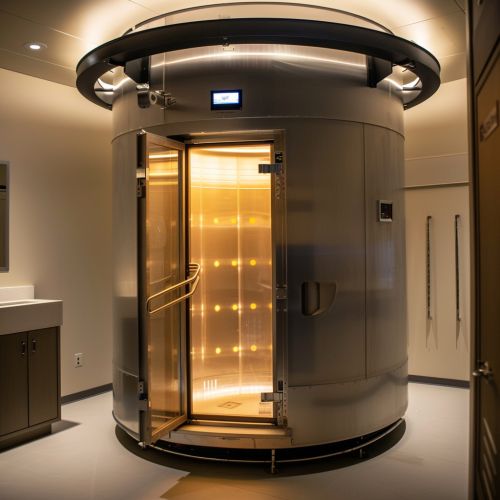Cryotherapy
Introduction
Cryotherapy, also known as cold therapy, is a technique where the body is exposed to extremely cold temperatures for several minutes. Cryotherapy can be delivered to just one area, or you can opt for whole-body cryotherapy. Localized cryotherapy can be administered in a number of ways, including through the use of ice packs, ice massage, coolant sprays, ice baths, and even through probes administered into tissueCryosurgery.


History
The use of cold temperatures for therapeutic purposes has a long history, dating back to the ancient Egyptians who used cold to treat injuries and inflammation. In the 17th century, cold therapy was used to treat a variety of conditions, including cancer. The modern form of cryotherapy, which involves the use of liquid nitrogen, was developed in the 1960s and has been used to treat a variety of conditions, including skin conditions, cancers, and to alleviate pain and inflammation.
Mechanism of Action
Cryotherapy works by reducing the temperature of the skin to 30-50°F in a short amount of time. This rapid cooling of the skin leads to vasoconstriction, or narrowing of the blood vessels, which helps to reduce inflammation, swelling, and pain. Additionally, the cold temperatures can help to numb nerve irritation, further reducing pain. When the body is exposed to cold temperatures, it also triggers the release of endorphins, the body's natural painkillers, which can help to reduce pain and promote a sense of well-being.
Types of Cryotherapy
There are several types of cryotherapy, including whole-body cryotherapy, partial body cryotherapy, and localized cryotherapy.
Whole-Body Cryotherapy
Whole-body cryotherapy involves exposing the entire body to very cold temperatures, typically inside a specially designed cryotherapy chamber. The individual will stand in the chamber for 2-4 minutes, during which time the temperature inside the chamber is reduced to between -200°F and -300°F.
Partial Body Cryotherapy
Partial body cryotherapy involves exposing a portion of the body to cold temperatures. This is typically done using a cryotherapy sauna, which is similar to a traditional sauna but cooled to much lower temperatures.
Localized Cryotherapy
Localized cryotherapy is a type of cryotherapy where cold is applied to a specific area of the body. This can be done using a variety of methods, including ice packs, ice massage, coolant sprays, and probes that are inserted into tissue.
Benefits of Cryotherapy
Cryotherapy has a number of potential benefits, including pain relief, reduced inflammation, improved recovery from exercise, and improved skin condition.
Pain Relief
One of the main benefits of cryotherapy is pain relief. The cold temperatures can help to numb nerve irritation, reducing pain. Additionally, the release of endorphins can also help to reduce pain and promote a sense of well-being.
Reduced Inflammation
Cryotherapy can also help to reduce inflammation. The cold temperatures cause vasoconstriction, or narrowing of the blood vessels, which can help to reduce inflammation and swelling.
Improved Recovery from Exercise
Cryotherapy can also help to improve recovery from exercise. The cold temperatures can help to reduce muscle soreness and speed up the recovery process.
Improved Skin Condition
Cryotherapy can also have benefits for the skin. The cold temperatures can help to tighten the skin and improve its appearance. Additionally, cryotherapy can help to treat a variety of skin conditions, including acne and psoriasis.
Risks and Side Effects
Like any treatment, cryotherapy has potential risks and side effects. These can include numbness or tingling, redness and irritation of the skin, and in rare cases, frostbite. It's also possible to have an allergic reaction to the cold temperatures. Individuals with certain health conditions, including high blood pressure, heart disease, and poor circulation, should not use cryotherapy.
Conclusion
Cryotherapy is a versatile treatment that can be used for a variety of conditions, from pain and inflammation to skin conditions. While it does have potential risks and side effects, for many people, the benefits of cryotherapy outweigh the risks.
